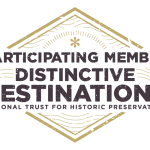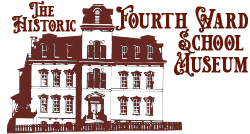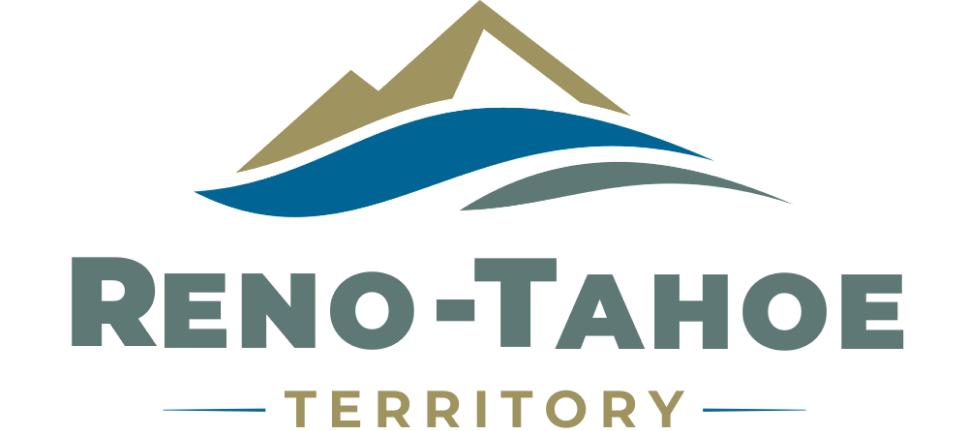Mission Statement:
To connect people to the relevance and importance of the Comstock story through its authentic preservation, interpretive exhibits and programs, and archival resources.
Goals:
- To support the preservation, in any form, of the heritage of, specifically, the Fourth Ward School, and generally, the Comstock, Storey County, and the state of Nevada.
- To achieve recognition in the fields of preservation, historical architecture, education, and history through a diversity of quality programs and events.
- To maintain and expand the museum activities.
Short History of the Fourth Ward School
by Susan James
The Territorial Enterprise called the new Fourth Ward School “The finest structure of the kind in Nevada,” adding “If it is our pride today, the time is not far distant when it will be our glory as well.” Virginia City, at the center of the vibrant Comstock Mining District founded in 1859, suffered from serious overcrowding of its public and private schools. The community welcomed the addition of sixteen classrooms.
Students of all ages attended the Fourth Ward School, situated at the south end of Virginia City’s C Street. The Primary Department contained first through fourth grades. Fifth and sixth graders were enrolled in the Second Grammar Department. Eighth and ninth graders pursued their education in the Fourth Ward’s High School Department, which earned the distinction of awarding diplomas to the first students in Nevada to complete all nine grades. By 1909, the Fourth Ward’s curriculum had expanded to include instruction through the twelfth grade.
From the turn of the century through the 1920s, Fourth Ward teachers educated hundreds of students, but the declining fortunes of the mining district and diminishing population caused the student body to shrink. By the mid-1930s, less than 200 students attended the Fourth Ward School. The building was in need of repair and it seemed to be an obsolete relic from another era. When federal New Deal funding provided an opportunity to build a modern structure, the community jumped at the chance. Situated in the middle of Virginia City, Storey County Middle School was originally an all-class replacement for the Fourth Ward School, which closed its doors after its last seniors graduated in 1936.
Abandoned to the elements, the Fourth Ward School seemed doomed. State grants in 1964 and 1984 rescued the structure, giving it the promise of a brighter future. A grant from the Nevada Humanities Committee funded a museum in the building, which reopened in 1986, fifty years after closing. Since that time, the Fourth Ward School Museum has received hundreds of thousands of visitors ranging from school groups to foreign tourists. With diverse programming, a changing gallery, and engaging exhibits, the Fourth Ward School has once again become a community center and a remarkable setting for those wishing to learn about the glorious past of Virginia City and the Comstock Lode.
Historic Fourth Ward School Foundation Timeline
- 1986 – 2000 The Museum operated under the auspice of Storey County.
- May 2000 A non-profit corporation formed and 501 (c) 3 status granted. The building is considered a major contributing aspect of the Comstock Historic District, listed on the National Register of Historic Places.
- Preservation Efforts Conservation Assessment Program grant to address the growing regional requests to use the facility, and to insure that we retain the integrity of the building and our collections.
- Milford Wayne Donaldson Architects (MWDA) completed a comprehensive Historic Structures Report.
- Savannah College of Art and Design help complete the HSR, produced Comstock video documentary and performed paint analysis to determine original exterior paint scheme.
- 1993-2009 Nevada Commission for Cultural Affairs in cooperation with the Nevada State Historic Preservation Office, E.L. Wiegand Foundation, Storey County, E.L. Cord Foundation, Richard and Rhoda Goldman Fund, Robert Z. Hawkins Foundation, National Park Service Save America’s Treasures, John and Grace Naumann Foundation, Oakmead Foundation, and members of the Historic Fourth Ward School have funded more than 3 million dollars for the ongoing restoration of the building.
- 2009 The former Home Economics room and primary classroom has been transformed into the Public Research Room for the archives.
- 2008 One primary classroom on the bottom floor later used as a Home Economics storage area has been restored for adaptive reuse as an archives.
- 2007 Retaining walls, railing fence, steps, and boardwalks replicated. Miscellaneous interior woodwork
- 2006 Custom storm windows.
- 2005 North bottom floor two primary classrooms for museum offices and archival work area.
- 2004 Balcony walkways
- 2003 Reconstructed North Tower water closets for restrooms and catering kitchen.
- 2002 Design and plans for North Tower and balconies.
- 2000 Rehabilitation of the third floor assembly/performance space.
- 1999 Rehabilitation of the entire exterior fabric of the structure and returned to original color scheme.
- 1993-1998 Structural retrofit, elevator and fire stairway
Memberships
Acknowledgements








